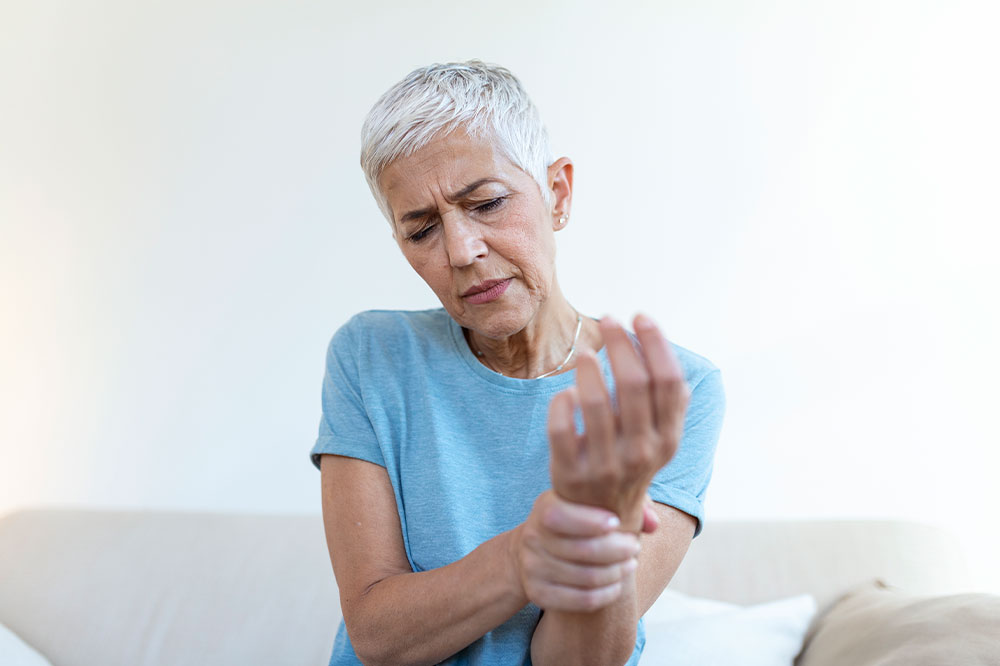5 common signs of psoriatic arthritis

Psoriatic arthritis is a health condition in which an individual’s skin and nails are chronically affected. Often, people living with psoriasis also develop this arthritis. Psoriatic arthritis mainly causes inflammation in the skin, joints, nails, and some other areas. While many symptoms of the condition are similar to those found in rheumatoid arthritis, there are certain differences between the conditions. To help people identify psoriatic arthritis, here are some of its main signs and symptoms:
Lower back pain
A major sign of psoriatic arthritis is acute pain in the lower areas of one’s back. This is caused due to a condition known as spondylitis, another health condition that stems from psoriasis and psoriatic arthritis. Spondylitis involves the inflammation of the joints between one’s spine and sacroiliitis (pelvic area). Additionally, this condition also involves acute inflammation of one’s spine in general.
Lower back pain is one of the most common symptoms of many other health conditions too. Therefore, one needs to consult their healthcare expert before jumping to conclusions. Once the professional diagnoses psoriatic arthritis, they can advise patients about the kinds of foods and prescription-based solutions to reduce the severity of this health condition.
Foot pain
Psoriatic arthritis causes pain, tenderness, and swelling in the feet. This condition causes the membranes lining one’s joints, connective tissue, and tendons to become inflamed. As a result, one feels acute pain in their feet and joints close to them when they experience a psoriatic arthritis flare-up.
Foot pain in the joints causes people to become unable to bend their knees or walk a few paces without feeling a stinging pain sensation in their feet. In this way, psoriatic arthritis can seriously affect the mobility of people and discourage them from exercising or moving around too much.
Fatigue
Fatigue is a key aspect of both psoriasis and psoriatic arthritis. In fact, people with either of these conditions are likely to feel fatigued even after resting well or getting a good night’s sleep. Tiredness is often accompanied by mental exhaustion with this arthritis. Some symptoms related to psoriatic arthritis-driven fatigue are sleeping difficulty, muscle or joint pain, headaches, sore throat, painful lymph nodes, cognitive dysfunction, and rare instances of dizziness.
Healthcare researchers are still finding out different theories and links to connect psoriatic arthritis and extreme fatigue. According to many, inflammation plays a crucial role in causing specific chemical changes in the body that directly leads to fatigue in individuals.
Nail changes
Apart from the skin and joints, one’s nails get severely affected by psoriatic arthritis. Studies have found that up to 80 percent of people with this skin condition experience nail changes, including nail thickening, dents, discoloration, and a popping-off of nails. Apart from spoiling one’s appearance, this issue also causes intense pain and discomfort to people with psoriatic arthritis, making it incredibly hard to work using their fingers and hands.
Needless to say, this results in individuals being unable to perform many tasks.
Eye inflammation
This is arguably the most dangerous symptom of all. Psoriatic arthritis leads to the development of an eye condition known as uveitis, which causes eye pain, blurry vision, and redness in one’s cornea. Any eye-related inflammation needs to be treated immediately, or else uveitis can lead to major problems such as permanent vision loss.